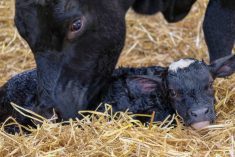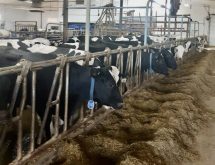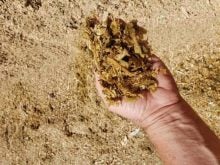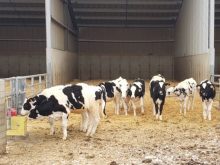In my experience, only a handful of producers fail to notice the few cases of mild sub-acute ruminal acidosis (SARA) which pop up on occasion. In most barn walks that I have conducted, producers accept SARA as routine, yet know it can adversely affect cows’ health, reproduction and milk/milkfat yield. In some of these cases, SARA not only decimated dairy performance, but depressed barn revenues. Unfortunately, SARA cannot be eliminated in these situations, but it can be controlled with an open attitude and well-balanced diets.
A worthwhile mindset recognizes that SARA exists in most lactating dairy herds. Its widespread presence naturally goes hand-in-hand with feeding grain (that includes sugar and starch) and other non-fibre carbohydrates (NFC) to lactating dairy cows. The grain displaces forage (forage fibre) in their whole lactation diet, after which these grains and other concentrates are digested by the cows’ ruminal micro-organisms and then converted into volatile fatty acids. These VFAs are absorbed across the rumen wall and metabolized to help lactating cows achieve their essential energy requirements.
Read Also

Harvest wraps up and fall work begins
At the Eppich famly ranch in western Saskatchewan, the fall harvest was successful with few breakdowns, cows and calves have been sorted and a new tractor has arrived
At the same time, adequate forage fibre in the diet allows these lactating dairy cows to go through the natural process of cud-chewing, which helps produce large volumes of saliva rich in sodium bicarbonate that buffers volatile fatty acids (and lactic acid) produced from the grain and NFC carbohydrates. It is estimated that a lactating cow produces about 150-200 litres of saliva per day, which maintains a healthy pH of 6.0-6.5 that is necessary for efficient feed fermentation/nutrient yield for support of optimum milk and milkfat production in the udder.
It’s all about saliva
In contrast, SARA is likely caused by inadequate forage fibre intake, which dovetails into lower saliva production, an enlarged pool of VFAs and lactic acid and smaller bicarbonate-buffering capacity, all contributing factors to depressed rumen pH. As a result, such acidic pH of lower than 6.0 underlies poor DMIs, frequent digestive upsets and depressed milk/milkfat yields among lactating dairy cows.
That is why whenever I conduct a barn walk of a lactating dairy herd, I watch the cows resting in their stalls and chewing their cud. If many are belching and chewing without a care in the world, I am confident that their diet has adequate dietary fibre for good milk and milkfat production. However, if active cud-chewing is difficult to spot, it immediately tells me that SARA is just around the corner.
The funny thing is that SARA doesn’t always behave this way. For example, this spring I started working with a 150-lactating dairy cow herd which had a variety of health and production challenges. I didn’t connect the dots to a SARA until about a month later. That’s because these lactating dairy cows did not exhibit major signs associated with SARA:
- There were no “on-feed, off-feed” issues caused by acidotic digestive upsets.
- The TMR appeared to have adequate forage fibre.
- Many cows showed cud-chewing activity and there was no evidence of them TMR “sorting.”
However, I started questioning whether there was an underlying SARA problem when milk production stalled at 29 litres per cow (140-days in milk), milkfat was limited to 3.7 per cent and DMI never exceeded 22 kg per cow. Furthermore, cow manure ranged from being either brick-hard, or diarrhea, or sometimes “normal,” but never consistent.
A closer look at TMR
I took a closer look at the TMR diet and that’s where SARA was hiding. Despite a lot of alfalfa-grass haylage mixed with some second-cut alfalfa hay to achieve a dietary level of 28 per cent NDF (75 per cent coming from forage fibre) in the entire dairy diet, much of this was indigestible lignin fibre. As much as 25 per cent of NDF was recorded on an analysis sheet and that told me that good consistent rumen function was slow and limited. Furthermore, a 15 lb. per head inclusion of crushed barley (nee a good source of VFA and lactic acid) was also added to the mixer wagon.
So, I made the following four changes: 1. Replace 25 per cent of this alfalfa-grass silage with some finer stem leafy alfalfa-grass hay; 2. Lower the amount of grain to 12 lbs.; 3. Add two lbs. of ground beet pulp — a source of digestible pectin-fibre; and 4. Replace 50 per cent of the barley with 50 per cent steam-flaked corn mixed with five per cent molasses.
In the end, it took about six weeks to implement all these changes but it resulted in dry matter intake increasing to 23.5 kg with no response to milk yield, yet milkfat increased to 4.01 per cent, and most manure piles became porridge-like.
This dairy farm was a good lesson about SARA in lactating dairy cows. It taught me that SARA can still exist, although not all visible signs are clear. However, when you do find it, make the dietary changes or otherwise that reduce anything that allow it in the lactating dairy barn.
















